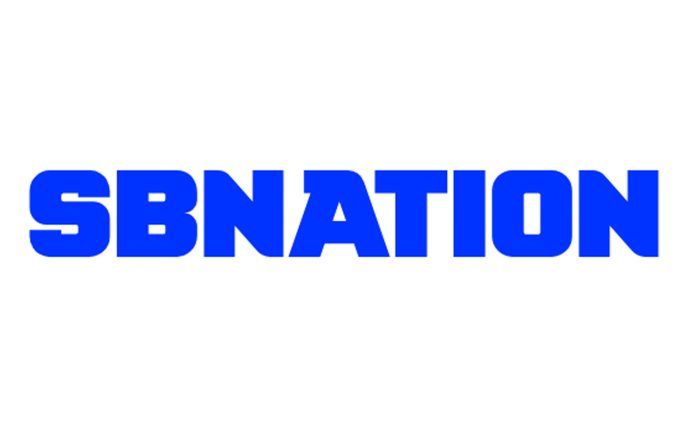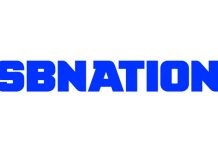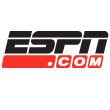
For several nights during the preseason, LeBron James and Luka Dončić were in the same place for the Lakers, but in both circumstances and seating, they also couldn’t have been further apart. Both were in street clothes on this night, but while James takes a high chair at the far end of the bench, Luka takes his customary seat next to the coaches. Multiple players squeeze in between the leaders of the franchise.
The Lakers say they are all about championships, and any chance the team has at winning one this year rests on both of these men working side by side, and to start the year, the distance between the two will be felt far further than just on the bench before a meaningless game. Days before, news broke that LeBron would be ruled out for the beginning of the season and re-evaluated in 3-4 weeks due to recovery from sciatica.
These dates are tentative, as Lakers injury return timetables often are, and his return will likely extend far past the deadline, understandable for a player entering into an unprecedented 23rd NBA season.
But just because James is dealing with an old man injury doesn’t mean he’s just some ancient veteran riding out the string to serve as a locker room leader. LeBron made second team All-NBA and finished sixth in MVP voting just a season ago; even with his age in mind, surviving without him won’t be easy for the Lakers. Still, this team is uniquely equipped to cover for his absence offensively, likely more so than any of his organizations ever have been in his long career.
It undoubtedly starts with Luka, a top-three player in the midst of his prime who’s no stranger to carrying offenses on his shoulders. Luka is only one full season removed from leading a Mavericks team to the NBA Finals, and while sporting a new, slimmer look, is set to shoulder an even larger offensive load, even if he “doesn’t view it that way.”
“I just want to play basketball,” Dončić said after a recent training camp practice. “Do less, do more. Whatever it takes to win.”
Dončić averaged 28.2 points, 7.5 assists, and 8.1 rebounds in a Laker jersey last season, but in the five games he played without LeBron, LA went 3-2, with his numbers jumping to 30.4 points, 8.8 assists, and 10.2 rebounds.
This uptick has already been evident in exhibition play, as he’s come out exceptionally hot and aggressive. Luka’s per 36-minute preseason stats are 36.8 points, 8.5 assists, and 7.9 rebounds, on 52 percent shooting on 3-pointers.
These are MVP-type numbers if kept up in the regular season. He looks in mid-season form, in basketball rhythm, coming off a productive summer of playing at Eurobasket.
His usage finished at 38 percent in the two preseason games he played, but it won’t just be Dončić shouldering the creative load without LeBron. He hopes to share the burden with rising backcourt star Austin Reaves.
“It’s next man up mentality,” Reaves says. “Nobody’s going to fill what he does with one person. I can’t go be LeBron. I wish I could, but yeah, I think you have to do it as a collective group, and that’s what we’ll do. ”
Reaves cleared the 20 points per game benchmark last season, a key milestone for a scoring guard. After the All-Star break, he averaged 22.2 points, 5.0 assists, and 4.6 rebounds, while shooting 40 percent from 3-point range. Shai Gilgeous-Alexander, Jalen Williams, and Deni Avdija were the only other players to hit all those statistical marks during that same period.
Even at the age of 40, LeBron is regarded as one of the best playmakers in the league. Reaves’ jump in shot creation ability to supplement Luka is what LA will rely on to soften the blow of his absence.
Reaves in the exhibition games has shown a continuation of his offensive leap from last year, being more decisive in the pick and roll, especially when making quicker reads as a passer. Off-bounce, on-the-move skip passes like the one below were not previously as accessible in his bag as they are now.

He’s also become more fluent with the step-back three as the handle gets tighter, a necessary shot for any high usage ball handler. In the clip below, he gets Buddy Hield with the behind-the-back dribble below to create the separation needed to get the shot off.

Following the trade for Dončić last season, the Lakers’ offense often degraded into more of a turn-based attack, as three on-ball players needed their touches, which left two standing around as spacers for too many possessions.
“With the just two of them it makes it a little easier, because Austin is so good and dynamic off the ball,” says head coach J.J Redick. “Austin, his versatility just makes things a bit easier when it’s just the two of them. That’s just the reality, in some ways that’s less of a concern until LeBron gets back.”
The high-powered backcourt will be flanked by LA’s most significant offseason addition, Deandre Ayton. With career averages of 16.4 points and 10.5 rebounds in seven seasons, the big man brings a level of skill, scoring punch, and size that was sorely missed in the team’s run last year.
His talent is undeniable, but the last few seasons raised questions about his willingness to play winning basketball. It allowed LA to acquire him via a buyout from the Portland Trail Blazers, hoping he returns to the player that anchored the middle for a Suns team that made the Finals in 2021.
Ayton, or “Dominayton” as he refers to himself, is eligible to be a free agent next summer. L.A. hopes these motivations give them an engaged and focused big man, and his two-way responsibilities will grow even larger with LeBron unavailable.
Ayton has gained chemistry with both LA’s ball-handling guards in exhibition play, and is even being discussed as a potential hub of the offense by Redick.
“DA is really good in terms of reading what the ball handler’s defender is doing,” Redick said following the Lakers’ only preseason win. “His ability to flip screens, force those overs. Him in the pocket has been really good. He’s made a concerted effort to get Austin open, create advantages for Austin using his screening, which I think is only going to benefit everyone down the line.”
Without LeBron, Ayton’s touches and stats should rise, and he’s a highly productive big man anywhere inside the arc.
Ayton shot an efficient 49.7% on shots in the paint outside the restricted area last season, combining the use of floaters and push shots with a soft touch around the basket, as shown below.

He also adds an element of spacing from the big man spot that was nonexistent last season, as he converted 50 percent from midrange and is a legit threat from there.
Without LeBron, Ayton as a threat opens up lanes for guards and wings to attack as he spreads the floor.
“With him being out, I can attack the rim more,” adds Rui Hachimura, a starting forward who averaged 13.6 points in the preseason, when asked about his offensive role without LeBron. “He likes to post up more. When that happens, I have to be more spaced out.”
To be absolutely clear, in no way are the Lakers better without LeBron on offense, but they have the personnel to survive if the necessary players step up.
It’s the defensive end that is another question entirely. A group already lacking talent on that end becomes significantly worse without James, losing crucial size and defensive experience to rely on. LeBron, even when he’s not fully engaged, still helps immensely as a help-side defender who can read plays three steps ahead. When fully locked in, he’s a monster forward who can uniquely protect the rim while being agile enough to move his feet and shut down ball handlers on the perimeter.
LA starts a, to put it charitably, defensively challenged backcourt that will get picked on by opposing ball handlers. Ayton brings size as a rim protector, but not much in terms of versatility, as his main defensive role will be to stay back in drop coverage, walling off the rim but conceding mid-range and 3-point shots to pick-and-roll ballhandlers.
This defensive style is heavily susceptible to guards who can hit pull-up jumpers, like Zach LaVine does below.

Gabe Vincent chases over the screen, but the 6’2 guard named as a starter in place of LeBron in the final dress rehearsal game is too small to keep a contest while Ayton sits back to protect against a drive.
LA will rely on healthy seasons from Jarred Vanderbilt and new-addition Marcus Smart in a defense by committee approach, hoping to mitigate some of the size issues. Both will likely be considered as potential starters to replace LeBron on that end.
LeBron was second on the team in defensive rebounds and blocks per game last season. He got the third most steals and led the team in total points in transition by a mile. There’s no replacing much of that — and his $50M salary on the roster — without a trade of some sort, and those types of reinforcements are unlikely to be available much before the February trade deadline.
But while the old cliche is that defense wins championships, it’s offense can keep you afloat. The Lakers are going to need to use their offense to stay above water with a generational star leading the way in a grueling Western Conference while they wait for LeBron to return.
Until then, the only partnership the team is getting between their old star and their young one are James and Dončić’s brief conversations when they rise from their respective chairs during timeouts or other stoppages. It’s easy to imagine that they’re discussing their observations and envisioning how they can fit together with this iteration of the roster. For the next few weeks, James will have the best seat possible to see where he can help when he returns, but for now, the Lakers have been left waiting for such conversations to take place on the court, hopefully sooner rather than later.




